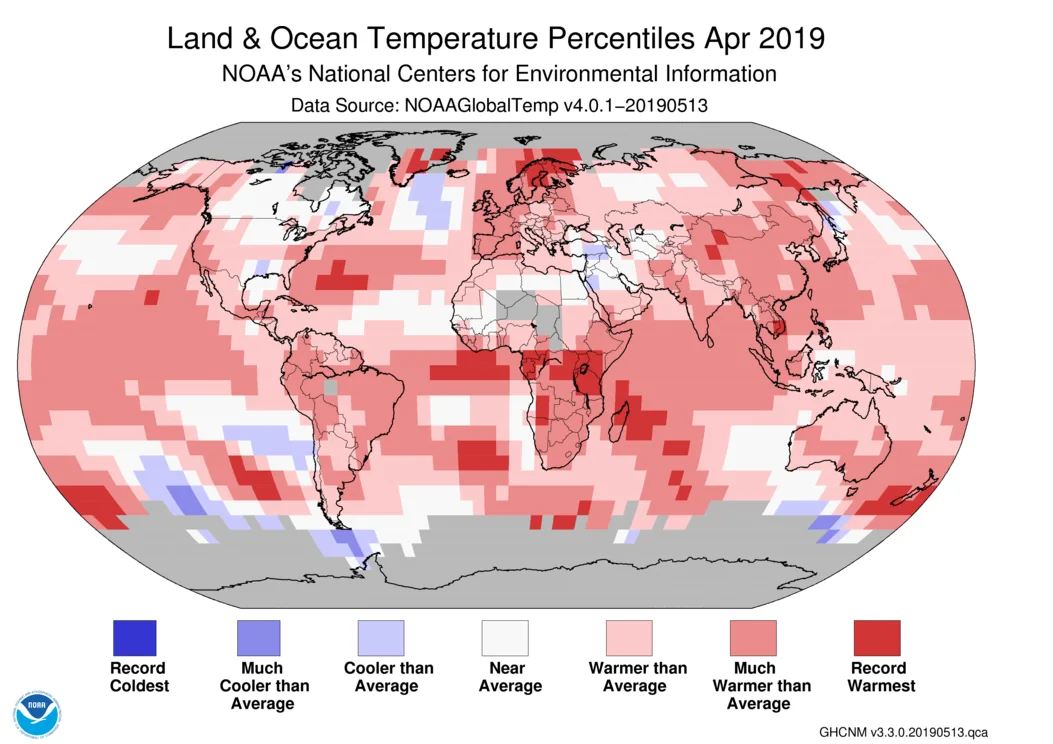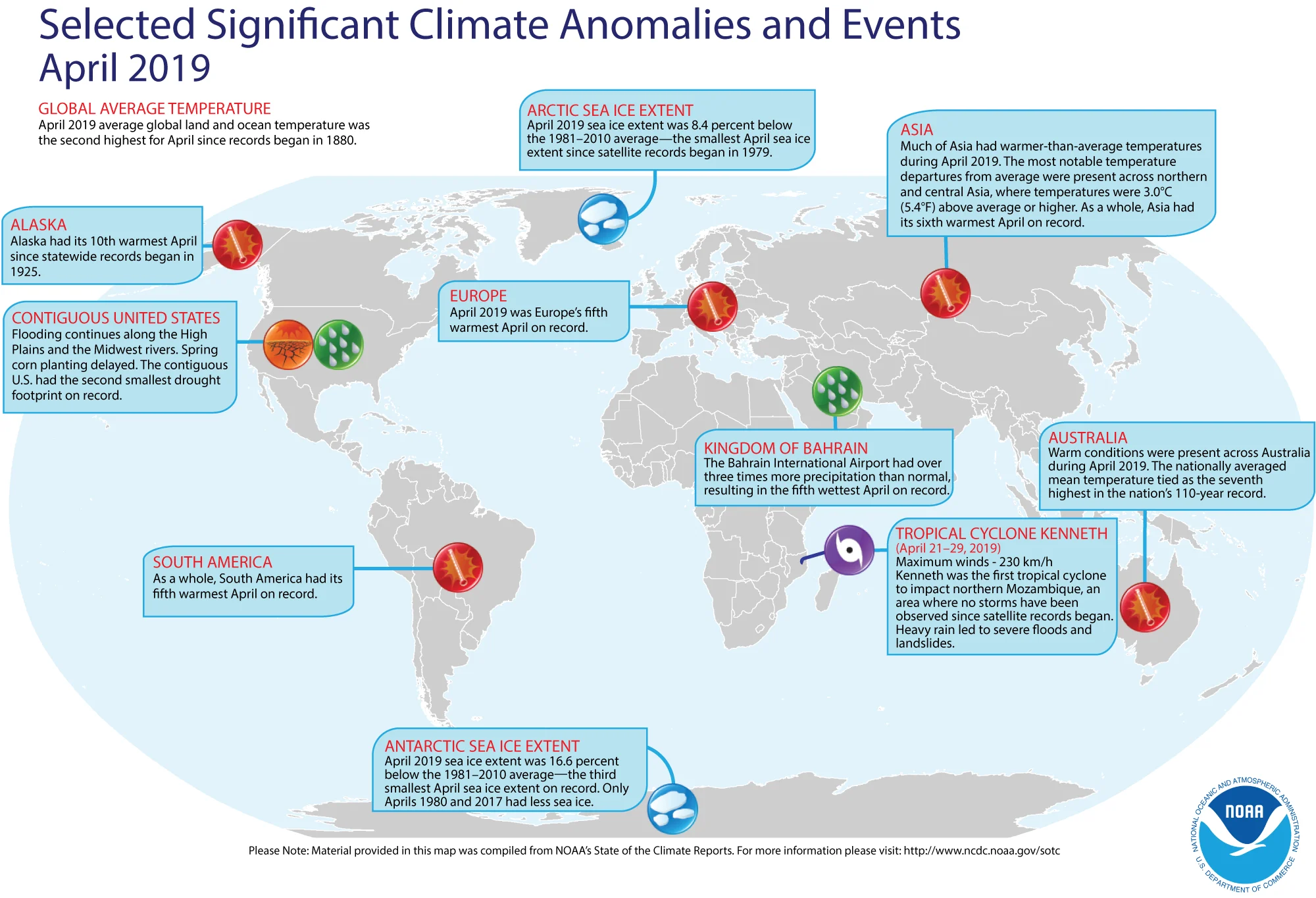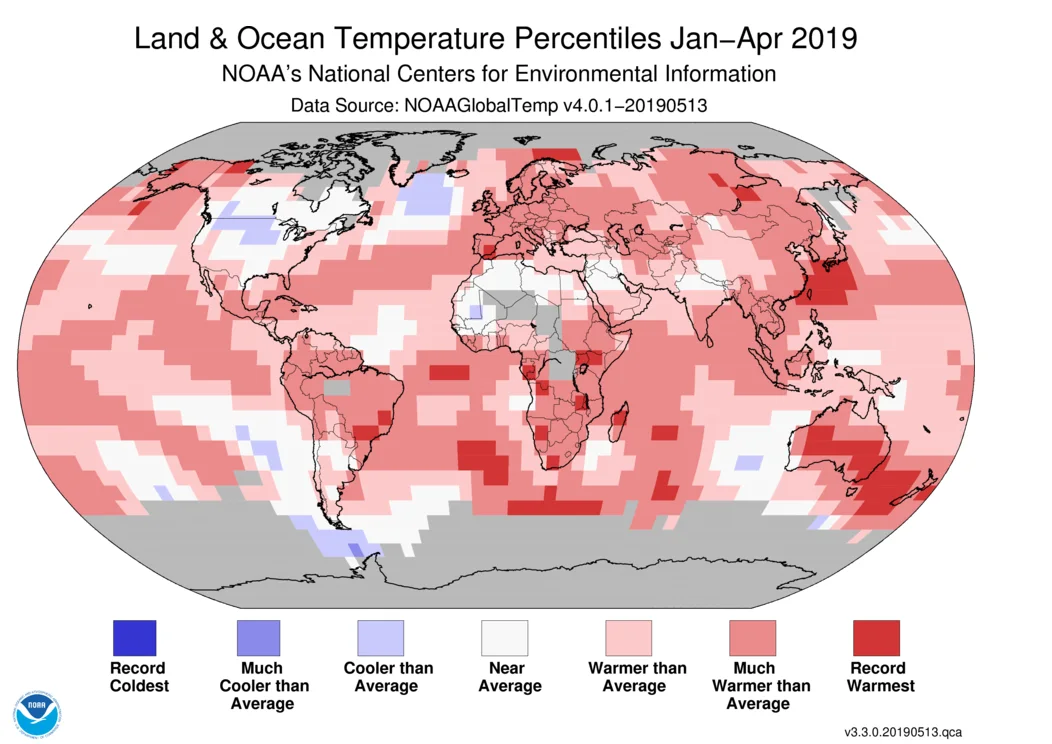
April 2019 ranked as second warmest April on record
If this year's warmer trend continues, 2019 could be on the podium for one of the warmest years on record.
This past April temperature anomaly map is covered in red, showing at a glance that this has definitely been one of the warmest Aprils on record. The global land and ocean surface temperature departure from average for April 2019 was the second highest for the month of April in the 140-year NOAA global temperature dataset record, which dates back to 1880. The April temperature across global land and ocean surfaces was 0.92°C above the 20th century average of 13.7°C, and was the second highest for April in the 1880–2019 record, behind 2016 (+1.07°C).

Geographically, the highest temperature anomalies were observed across parts of Greenland, Scandinavia, the Barents Sea, the Atlantic Ocean, the western Indian Ocean, central Africa, northeast Asia and the southern Pacific. The temperature anomaly was higher over land areas (1.47°C) than it was over the oceans (0.72°C).

No land or ocean areas actually record-cold April temperatures, however some ocean areas south of Greenland, Argentina or Australia and the southern Pacific ocean, did show cool temperature departures.

In terms of sea ice extent, April 2019 marked the 18th consecutive April with Arctic sea ice extent below average values. This was the smallest Arctic sea ice extent for April in the 41-year record at 1.2 million square kilometers. That is 8.4% reduction compared to the 1981–2010 average and 230,000 square kilometers below the previous record low set in April 2016. This analysis is provided by the National Snow and Ice Data Center using data from NOAA and NASA.
The observed record lows are mainly related to the rapid ice loss in April across the Sea of Okhotsk. Additional loss of ice was also significant in the Baffin Bay and the Barents and Bering Sea.

Taking a look at the year so far (January-April), the global temperature anomaly across global land and ocean surfaces was 0.89°C above the 20th century average of 12.7°C, the third highest for a January–April period in the 140-year record, behind the years 2016 (+1.15°C) and 2017 (+0.94°C).
If this warmer trend continues during the coming months, we will very likely see 2019 on the podium of the warmest years on record.







